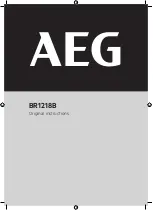
7
3. Terms Conventions
Some of the terms used in this manual are described below, as different literature has
different interpretations of them.
Sample –
a single value containing the amplitude of the reflected signal at a certain
point in time.
Trace –
a set of samples containing one-dimensional information about the
reflected signals. Examples of traceses are shown in Fig.2.3 and 4.1.
Profile –
or a radargram, this is a set of traces that came to the receiving antenna in
the time interval from the moment the sounding pulse was sent until the end of the
time range sweep, preseted by the operator, containing two-dimensional
information about the reflected signals received as a result some route passing. The
profile can contain any number of traces. The horizontal axis of the profile is the X
axis in meters. The vertical axis of the profile is the time axis Y with the zero at the
moment of the sounding pulse radiation, where the end corresponding to the end of
the trace recording (time range sweep). Examples of profiles in various output types
are shown in Fig. 4.2 and 4.3. A profile (or some number of profiles) as a file (-s) is
the final result of data acquisition. The next steps are data processing (if necessary),
its interpretation and printing (if necessary).
Zero point –
the trace sample corresponding to the moment of the transmitter
radiation maximum. It is the sample that used as a zero. It is a point where starts
time counting of the reflected signal. As mentioned above, the transmitter pulse is
one and a half period (i.e., three lobes) signal. This suggests that the zero point
should be set to the middle of the transmitter pulse lobe (direct wave). The way to
set the zero point is described in Section
11. Working with sounding data files
on
page
46
. This is a very important parameter that must be taken into account while
depth determination of the target in the sounded medium. Examples of the true zero
point location are shown in Fig. 4.1, 4.2, 4.3,
11.3
.
Wiggle plot
– is a method of the profile output, where traces are located vertically
at constant distance from each other. The trace (or an average group of traces)
drawing is made by a curved line, which is deviating from the trace axis line from
side to side, depending on the amplitude of each sample in the trace. In this case,
the positive half-waves of the signals are painted with the color corresponding to
the maximum positive level of the selected color scale. The wiggle plot output
examples are shown in Fig.4.2.
Line scan –
is a method of the profile output, where traces are located vertically,
close to each other, and are drawn as vertical lines. The color at each point on the
trace line depends on the amplitude of the corresponding trace sample according to
the selected color scale. The line scan examples are shown in Fig. 4.3.
Coherent lineup (
in-phase axis
) –
it’s a line of equal phases of identical signals on
neighboring traces. For example, a line connecting the maximum of the wave
reflected from the subsurface interface, a line connecting the maximum
(minimums) of a diffraction wave from a pipeline, etc. The whole image of the
research object is built on the profile by highlighting such lines. In the case of a
subsurface interface, the in-phase axis practically repeats its shape and helps to
rebuilt its shape exactly on a depth scale for the known permittivity or wave
velocity.









































